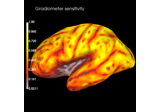mne.source_space.compute_distance_to_sensors#
- mne.source_space.compute_distance_to_sensors(src, info, picks=None, trans=None, verbose=None)[source]#
Compute distances between vertices and sensors.
- Parameters:
- srcinstance of
SourceSpaces The object with vertex positions for which to compute distances to sensors.
- info
mne.Info|None The
mne.Infoobject with information about the sensors and methods of measurement. Must contain sensor positions to which distances shall be computed.- picks
str| array_like |slice|None Channels to include. Slices and lists of integers will be interpreted as channel indices. In lists, channel type strings (e.g.,
['meg', 'eeg']) will pick channels of those types, channel name strings (e.g.,['MEG0111', 'MEG2623']will pick the given channels. Can also be the string values'all'to pick all channels, or'data'to pick data channels. None (default) will pick good data channels. Note that channels ininfo['bads']will be included if their names or indices are explicitly provided.- trans
str|dict| instance ofTransform If str, the path to the head<->MRI transform
*-trans.fiffile produced during coregistration. Can also be'fsaverage'to use the built-in fsaverage transformation.- verbosebool |
str|int|None Control verbosity of the logging output. If
None, use the default verbosity level. See the logging documentation andmne.verbose()for details. Should only be passed as a keyword argument.
- srcinstance of
- Returns:
- depth
arrayof shape (n_vertices, n_channels) The Euclidean distances of source space vertices with respect to sensors.
- depth
